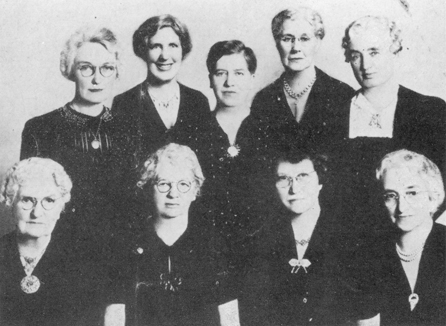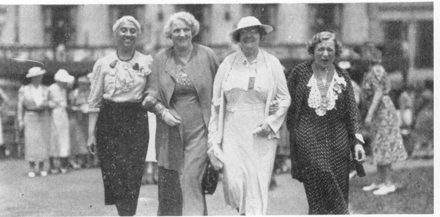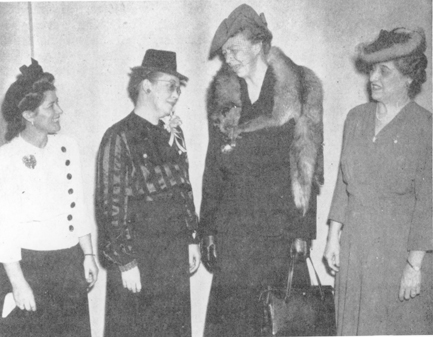“WHEN WE EMERGE FROM THIS NIGHTMARE AND THE STRUGGLE IS OVER WE MUST BE STRONGER THAN EVER TO SEE THAT ALL OUR INFLUENCE IS ON THE SIDE OF A JUST AND LASTING PEACE." the BRITISH SOROPTIMIST 1939.
Since the founding of the very first Soroptimist club in Oakland, California in 1921, Soroptimist International (SI) has sought to bring about change to the lives of women and girls worldwide. Through its global network of four Federations and its dedicated volunteer membership of around 66,000, SI is driven by its mission of transforming lives through education, empowerment and by enabling opportunities.

Rooted in the vision that women and girls will achieve their individual and collective potential, SI’s advocacy work and on-the-ground projects seek to drive the realisation of these aspirations and ensure that women and girls have an equal voice in creating strong and peaceful communities, now and in the future.
The name Soroptimist was coined from the Latin soror meaning sister, and optima meaning best. And so Soroptimist is perhaps best interpreted as ‘the best for women’.

In 1921, the first Soroptimist club, Alameda County was formed in California with over 80 business and professional women from in and around the city of Oakland. With Violet Richardson as the first President, back then the first club, which changed its name to SI Oakland in 1928, met weekly, debating service projects and hearing speakers on various worldwide issues that would broaden members’ horizons.
The first project was to ‘Save the Redwoods’ – the great ancient trees which were being felled and the club lobbied the legislature, taking on powerful lumber companies, and winning public support, which resulted in a major portion of the forest being set aside as protected land, that still exists today. Additional Soroptimist clubs soon followed along the Pacific and Atlantic coasts, amounting to 15 clubs with 5 years, with a growing concern for women in their communities.
A similar club was established in Britain, and here the first project sought to befriend girls who had no mothers and support a local Children’s Society to establish an open-air hospital school. Despite their similarity, neither club knew of the other and as similar clubs began forming in other cities, all without knowledge of each other, a seed was sown and a global membership was taking shape.
In 1924 Suzanne Nöel founded Soroptimist International of Paris, the first Soroptimist club in Europe using her worldwide lecturing series to share the Soroptimist concept and messages, prompting the establishment of clubs all over Europe. Nöel later became the first President of the European Federation.
1928 saw the Foundation of both the American and the European Federations and a Soroptimist International Association was created to provide a link between the Federations.
In 1934, Europe and Great Britain & Ireland were to form separate Federations and during this decade many service projects were taken on, such as vocational training for women and children, housing for the disadvantaged, assistance for the sick and disabled, and the caring of refugees. Australia joined the network in 1937 with the first of its clubs forming in Sydney, Eastern Australia.

In 1939 during World War II, a British Soroptimist wrote:
“Two things are clear to us in the midst of the bewilderment and distress of these present days. One is that, as a band of women whose aim is the furthering of international understanding, we must stick together and keep in active working order our Soroptimist organisation, the value of which is greater than ever before. The other is that when we emerge from this nightmare and the struggle is over we must be stronger than ever to see that all our influence is case on the side of a just and lasting peace.”
During this time, Soroptimists embarked on rescuing members of the SI Vienna club and their families, threatened by the Nazi regime. American Soroptimists donated funds and clothing and many clubs across Europe were forced to meet clandestinely, making and mending clothes, and preparing all manner of items that were needed. Soroptimists opened Rest Rooms for women in the forces and a New Zealand club set up a refugee relief committee for people escaping from Europe.

In 1946 Soroptimists held a reception for delegates to UN conferences, which included Eleanor Roosevelt, and in 1948, the Soroptimist International Association was awarded Consultative status with UNESCO. The Association was awarded category C Consultative status with ECOSOC (Economic & Social Council, United Nations) in 1950. In 1952 the governing body of Soroptimist International was founded, as it is today. In 1966, UNICEF granted consultative status to Soroptimist International for service projects for children and in 1975, Soroptimists attended the First UN World Conference on Women which was held in Mexico City.
The very first Quadrennial Project got underway in the Maldives in 1978, training 20 paramedics and providing 14 medical boats to carry health workers, medical drugs, supplies and equipment to the people in the remote Maldives atoll islands in the Indian Ocean. Also this year, SI of the South West Pacific Federation was born, with Mary Whitehead as Founding President.
1982 saw the first President’s December 10th Appeal, a bi-annual Appeal that still stands strong, bringing countless benefits to women and girls across the world. Catherine Salt chose the very first President’s Appeal project on the island of Pulau Bidong, Malaysia, helping refugee women and children. Pulau Bidong was the first asylum centre run in co-operation with UNHCR and provided housing, care and maintenance, including medical and social services for refugees awaiting re-settlement. Soroptimist International was granted Category 1 Consultative status (now General Consultative Status) with ECOSOC, in 1984.
Further reading: The History of Soroptimist International (1995) by Janet Haywood
Soroptimist International has a limited number of ‘The History of Soroptimist International’ by Janet Haywood (1995) available for purchase (English only). Please contact hq@soroptimistinternational.org for further details.
Special thanks to The Soroptimist Archives, Soroptimist International of the Americas, Philadelphia, PA, USA for all photographs.

Comments are closed.